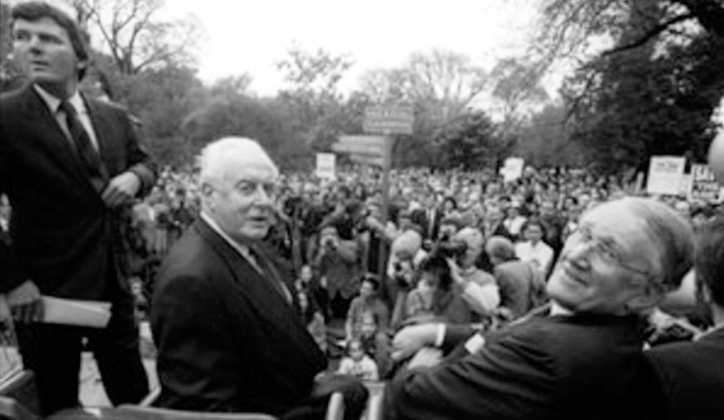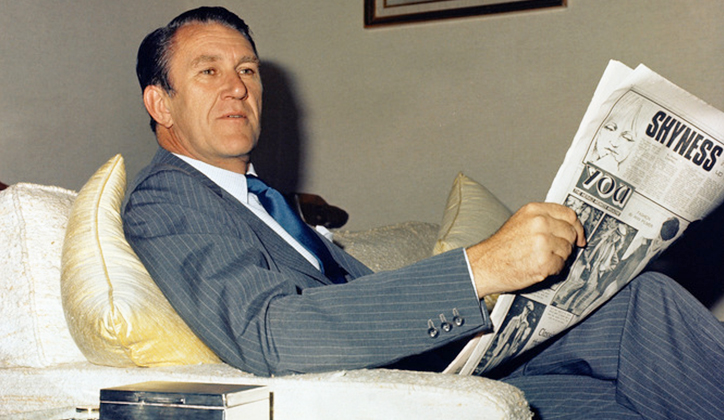This article was originally published by Bridget Griffen-Foley on The Conversation, and shared as part of the Creative Commons.
Soon after The Dismissal came the strike. On December 8, 1975, News Limited journalists walked off the job in protest at “bias and dishonesty” in the company’s coverage of the federal election. Earlier newspaper stoppages had been over matters industrial. This one, still seared in the memories of veteran journalists and political observers, was the first in Australia over editorial coverage.
As a youthful army minister in the late 1960s, Fraser had engaged enthusiastically in “background briefings”. He earned a reputation for leaking material, particularly to Sir Frank Packer’s Australian Consolidated Press.
When Fraser replaced Billy Snedden as opposition leader in March 1975, he had the Fairfax group’s support. As the relationship between Rupert Murdoch and then-prime minister Gough Whitlam deteriorated, News Limited was soon also in the Fraser camp.
Fraser’s press secretary, David Barnett, made his notoriously aloof boss accessible to senior media figures, including Graham Perkin at The Age. During boardroom lunches at Fairfax and News, Fraser made it clear that the extraordinary circumstances needed for him to force an election would not be signalled until all major metropolitan newspapers called for an election.
The events of late 1975, in which Murdoch exercised his political clout, are the stuff of legend. The means by which Fraser came to office soured relations with journalists, many of whom sympathised with Whitlam.
While his chief of staff, Tony Eggleton, persuaded Fraser to make himself available to leading journalists and dine with editors at the Lodge, he seldom granted press conferences. He instead preferred gutter-stop interviews that prevented rigorous questioning. Print journalists complained about his privileging of the electronic media to get his message across.
The Fraser government’s record on media policy was mixed, and occasionally contradictory. One of its earliest actions, in December 1975, was to abolish the Department of the Media, a controversial creation of the previous government. After tumultuous reforms in media policy as elsewhere under Whitlam, the Fraser government in 1976 initiated an overdue inquiry into the entire industry.
The government replaced the beleaguered Australian Broadcasting Control Board with the Australian Broadcasting Tribunal (ABT). The aim was to separate broadcasting from political pressures in part through open licence hearings. Under Fraser, the local content requirement resented by broadcasters was also maintained.
The Coalition also continued the Whitlam government’s work in developing the modern community radio sector. Temporary licences remained in place until the sector was enshrined in formal legislation in 1978.
The commercial radio industry was surprised to find the Coalition wary of letting commercial interests penetrate the FM band. This changed in 1976 when the ABT paved the way for up to two FM licences in each of the capital cities. Commercial FM radio commenced in 1980.
At the same time, the Fraser government accused ABC programs of “bias” and slashed the broadcaster’s budget. This delayed the launch of a national Triple J youth network for years. Its treatment of the ABC inspired the formation of the Friends of the ABC (now ABC Friends) lobby group.
There was another, more important, media legacy. In November 1977 the government created the Special Broadcasting Service (SBS) as a statutory authority. Initially, the radio service was based on the two ethnic stations created by the Labor government, 2EA and 3EA.
In his campaign launch in December, Fraser promised to extend the service to television. This was partly to reclaim from Labor some of the “ethnic vote” of 1972. There was some speculation that he also thought SBS Television could be used for propaganda by the government of the day.
In 1978, Fraser was criticised for not using ABC staff and facilities to make his Australia Day address. Instead, he had assigned the task to an independent production company, Enterprise Production Video, which embarrassed him in January 1979 by mistakenly sending out his 1978 recording.
Enterprise Production Video went on to win a large contract for the production of experimental ethnic programs in 1979, ostensibly co-produced by SBS and the ABC, in the lead-up to the launch of SBS Television in 1980. Fraser appeared twice and then-immigration minister Michael MacKellar once, without any opportunity for equal time for the ALP.
In his long retirement, Fraser became known to new generations of Australians for his insistent advocacy of human rights and racial equality. Perhaps his views on the media changed, along with his views on the media – or perhaps they didn’t.
News Limited’s extraordinary support in 1975, from which he had undoubtedly benefited and to some extent courted, had developed in the furnace of a political crisis. Protesting with his old nemesis Whitlam in 1991 in support of Fairfax’s editorial independence, and against foreign ownership and the further concentration of media ownership, befitted a true liberal.

Fraser appeared more comfortable in the media gaze out of politics than in it, perhaps finally convinced how imperative the media was to disseminating his views on political and social issues. He appeared in, and wrote for, a multitude of publications, from The Conversation to Guardian Australia to The Monthly.
Fraser even embraced social media. By the time of his last tweet, just three days before his death, he’d accumulated 10,294 tweets and 44,652 followers.
Over 50 years, Fraser’s relationship with the Australian media waxed and waned, from enthusiasm, pragmatism and caution to something, in the end, approaching mutual respect and perhaps even affection.
Catch up on recent contributions to The Conversation from other Macquarie authors.

